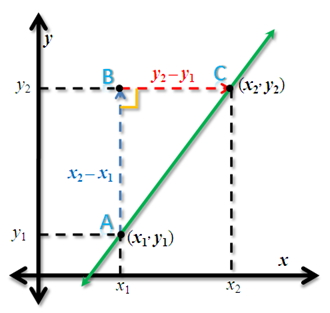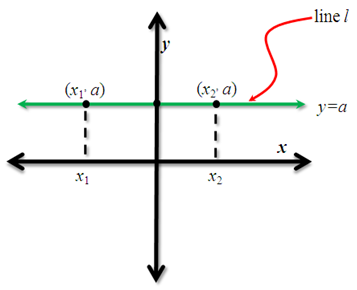Slope Concept 3 – Slopes of Vertical and Horizontal Lines
Note: This is the third part of the Slope Concept Series.
Part I: Basic Understanding of Slope
Part II: Slope of the Graph of a Linear Function
In the Understanding the Basic Concepts of Slope post, we have discussed that the slope of a line in the coordinate plane is described as the change in y over the change in x. When we say change in x, or change in y, we talk about the ‘change distance.’ To determine a distance we need two points. If we are in the coordinate plane, and we have two points with coordinates and
, then the rise is
and the run is
. Thus, the slope of the line containing the two points is
.

Fiigure 1 - Slope of a line containing points with coordinates (x1,y1) and (x2,y2).
We also have discussed that the slope of a horizontal line is 0 by rotation. Here, we will show the same fact using coordinates as shown.
A horizontal line has the same y-coordinates everywhere. Let us consider line l in Figure 2 with equation . Let us pick two points with coordinates
and
. Using the formula above, calculating for the slope we have
. Hence, the slope of a horizontal line l is
.

Figure 2 - A horizontal line containing points with coordinates (x_1,a) and (x_2,a)..
Similarly, a vertical line has the same x-coordinate everywhere. Let us consider line m in Figure 3 with equation . Let us pick two points with coordinates
and
. Using the formula above, calculating the slope, we have
which is undefined.

Figure 3 - A horizontal line containing points with coordinates (b,y2) and (b,y1).
In the sequel of this post, we will discuss the lines with positive and negative slopes.